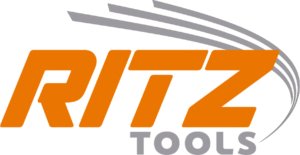Electricity is an integral part of our daily lives, powering our homes, workplaces, and industries. While it’s undoubtedly a boon, it can also be hazardous if not handled with care. Electrical accidents can result in severe injuries or even fatalities. To ensure your safety, it’s essential to use the right electrical safety equipment. In this comprehensive guide, we’ll explore the importance of electrical safety equipment, its types, and how to use it effectively.
Understanding the Significance of Electrical Safety Equipment
Electrical safety equipment plays a crucial role in protecting individuals from electrical hazards. It acts as a barrier between a person and potential dangers associated with electricity. This equipment is designed to minimize the risk of electric shocks, burns, and other accidents. It is vital for both professionals working with electricity and homeowners dealing with electrical appliances.
Types of Electrical Safety Equipment
1. Insulated Gloves
Insulated gloves are a fundamental piece of electrical safety equipment. They are designed to provide protection against electric shocks while working on live electrical systems. These gloves are typically made of rubber or other insulating materials, and they should be worn whenever there’s a risk of direct contact with live wires.
2. Safety Goggles
Safety goggles are essential for safeguarding your eyes when working with electricity. They provide a barrier against sparks, debris, and chemicals that can be released during electrical work. Always ensure that your safety goggles are made of impact-resistant materials and fit snugly.
3. Voltage Detectors
Voltage detectors are handy tools that help identify the presence of voltage in electrical systems. They are essential for confirming whether a circuit is live or not, preventing accidental contact with live wires. Voltage detectors come in various types, including non-contact and contact testers, to suit different applications.
4. Electrical Insulating Mats
Electrical insulating mats are used to create a safe working area when dealing with electrical panels and switchboards. These mats are placed on the floor to prevent electrical contact and provide insulation in case of a fault. They are typically made of rubber and come in various thicknesses to meet specific voltage requirements.
5. Ear Protection
In environments with high levels of electrical noise, such as industrial settings, ear protection is crucial. Prolonged exposure to loud electrical equipment can lead to hearing damage. Earplugs or earmuffs can help protect your hearing while working in noisy electrical environments.
Proper Usage of Electrical Safety Equipment
1. Inspect Your Equipment Regularly
Before each use, carefully inspect your electrical safety equipment for any signs of wear or damage. Any compromised equipment should be replaced immediately to ensure your safety.
2. Choose the Right Equipment for the Job
Select the appropriate safety equipment based on the specific electrical tasks you are performing. Ensure that the equipment you choose meets the relevant safety standards and voltage ratings.
3. Wear the Equipment Properly
Always wear safety equipment as intended. Insulated gloves should fit snugly, safety goggles should cover your eyes completely, and voltage detectors should be used according to their instructions.
4. Stay Informed and Trained
If you are not adequately trained in electrical work, seek professional help or training before attempting any electrical tasks. Understanding electrical hazards and safety procedures is essential for your well-being.
5. Regular Maintenance
Keep your safety equipment clean and well-maintained. Store it in a dry, cool place away from direct sunlight and extreme temperatures. Regularly test voltage detectors and other electronic safety equipment to ensure their accuracy.
Conclusion
Electrical safety equipment is not a luxury but a necessity when dealing with electricity. It provides a crucial layer of protection that can save lives and prevent accidents. Remember always to prioritize safety, stay informed, and use the right equipment for the job. By following these guidelines and investing in quality electrical safety equipment, you can protect yourself and those around you from the potential hazards of working with electricity. Safety should always come first in the world of electrical work.
Where can I buy electrical safety equipment?
Answer: You can purchase electrical safety equipment from various sources, including hardware stores, online retailers, and specialized safety equipment suppliers. Ritz Tools, a reputable supplier, offers a wide range of electrical safety equipment options to choose from.
What are the different voltage ratings for electrical insulating mats?
Answer: Electrical insulating mats come in various voltage ratings to match specific applications. Ritz Tools provides insulating mats with different voltage ratings, such as 450V, 11kV, and 33kV, to ensure safety in various electrical environments.
How often should I replace my insulated gloves?
Answer: Insulated gloves should be replaced regularly, especially if they show signs of wear or damage. Industry standards often recommend replacing them every six months to ensure they maintain their insulating properties and keep you safe.
What are the key features to look for in safety goggles for electrical work?
Answer: When selecting safety goggles for electrical work, it’s essential to choose ones made of impact-resistant materials, with a secure fit to prevent debris and sparks from entering your eyes. Ritz Tools offers safety goggles designed to meet these safety requirements.
Are there any recommended safety guidelines for using voltage detectors?
Answer: Yes, it’s crucial to follow safety guidelines when using voltage detectors. Always read the manufacturer’s instructions for proper usage. Ritz Tools’ voltage detectors come with detailed instructions for safe and accurate voltage detection, including both non-contact and contact testers.


